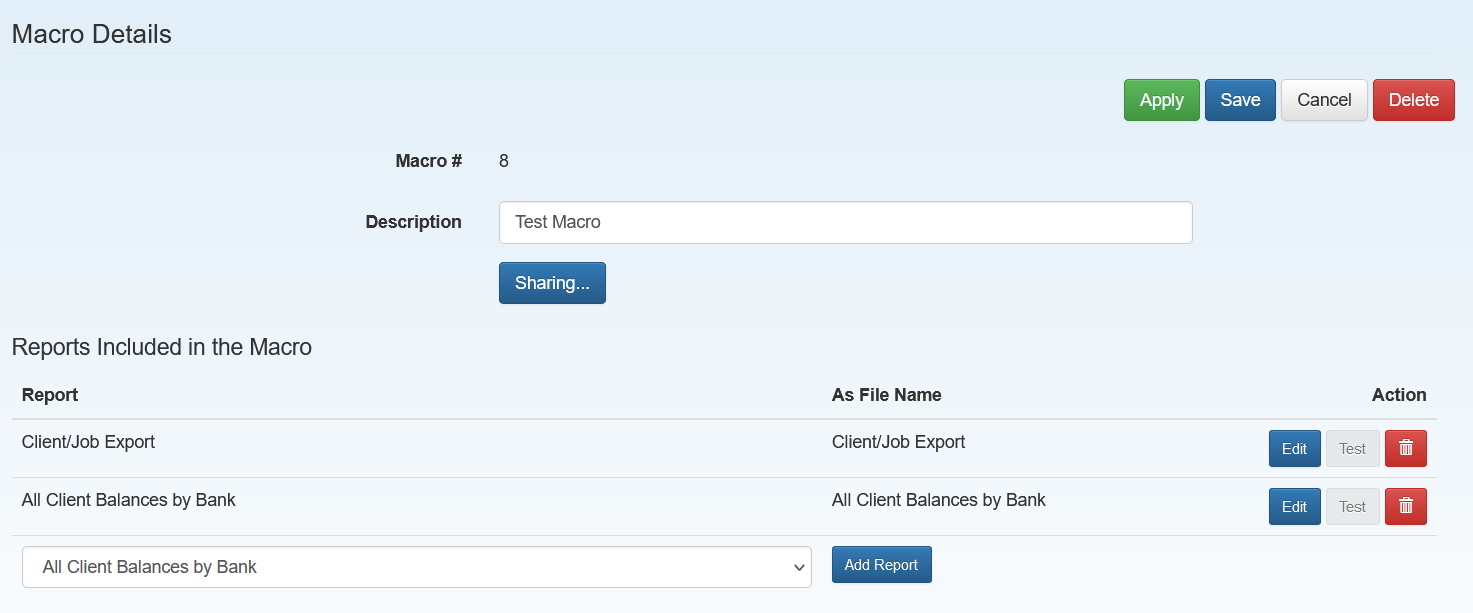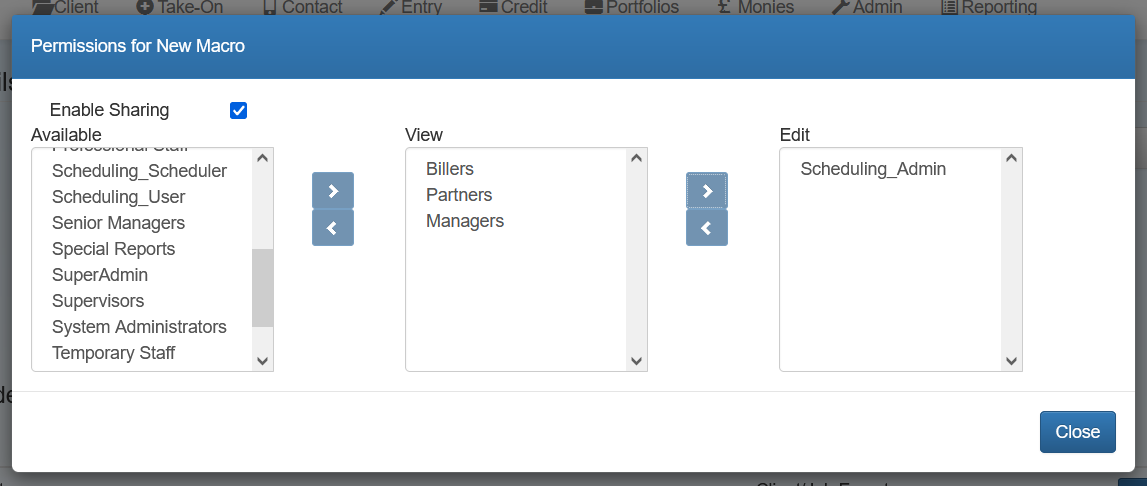Create a new report macro
|
IT Manager
|
Practice Manager
|
Report macros allow the user to set up a series of reports that can be run in a single instance and emailed to the user. A single user can have multiple macros but they are specific to the user, unless Sharing has been applied, in which case they are visible to users within specific permissions groups.
-
Select Reporting > Task Pad, then select Report Macros.
-
From the Report Macros page, click Create a New Macro.
-
From the Macro Details page, enter a report Description.

-
Select Sharing to open the sharing permissions. From here, you can select whether you want this macro to be shareable. If you do, move different user types into the View or Edit fields, depending on the level of permission you require. View will allow users to run the macro, but Edit will allow users to change various parameters. Select Close.

-
Select Apply to save the changes to sharing permissions.
-
To set up your macro, select the Edit button from the section entitled Reports Included in the Macro. A screen appears which allows you to set up the basics of your macro.

-
Select the type of report output from the Output Type list (defaults to PDF).
-
Enter a File Name to be used for the saved reports.
-
By default, the generated report file is emailed to you. You can also send a copy to others by entering the required email addresses in Also Email to.
-
Select the Ranges tab (if available), then select applicable ranges for this report. Depending on the report type, you may be able to choose the required date ranges from a Period Type menu.
Some reports may required additional parameters, group and filtering options to be applied which are made available via separate tabs.
-
Click Close Details to return to the Report Macro Details page. Click Add Report to add any further reports. Once finished, select Apply, then Save.
-
The macro can then be run or edited by clicking the applicable button on the Report Macros page.
-
To delete a macro, click the applicable Edit button to open the Macro Details page, then click the Delete button.